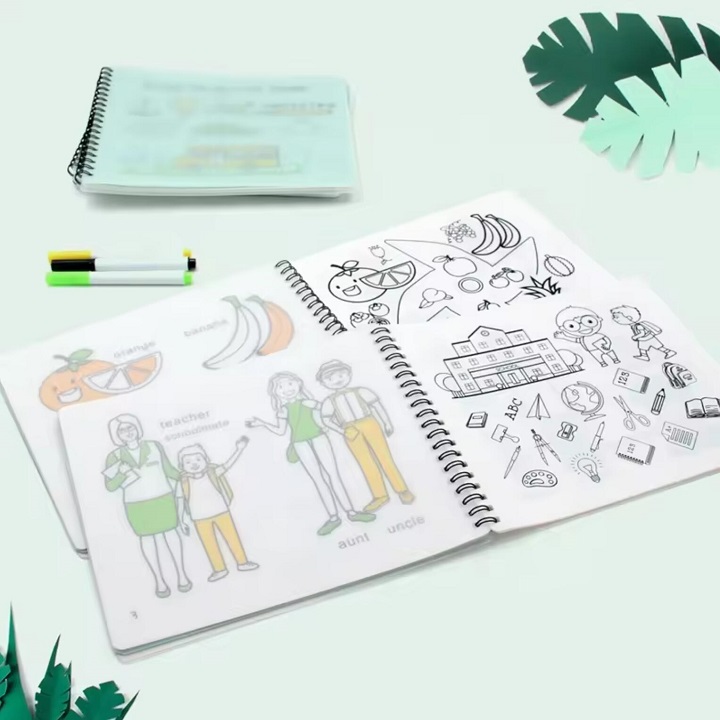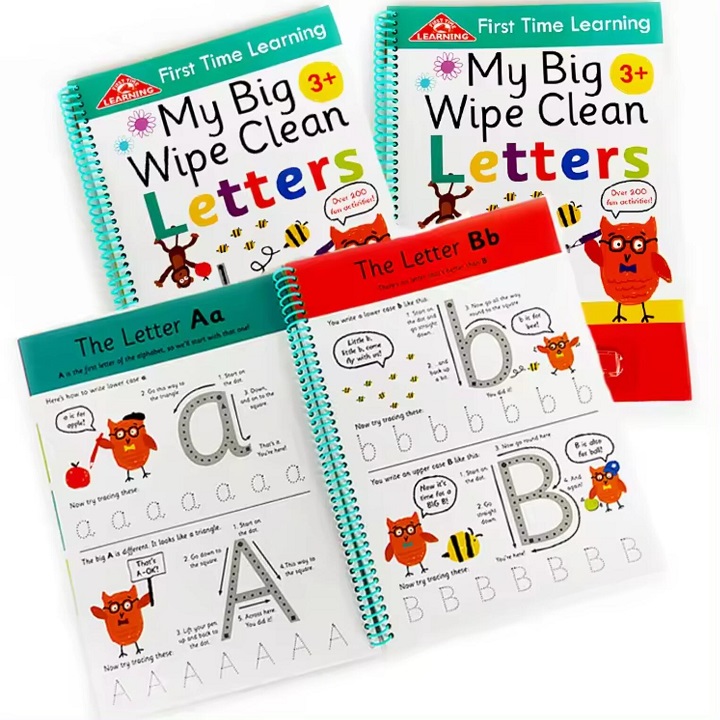Content Menu
● Introduction to Activity Books
>> Example of an Activity Book
● Benefits of Activity Books
>> Enhancing Cognitive Skills
>>> Example: Puzzle Books
>> Enhancing Creativity & Imagination
>>> Example: Coloring Books
>> Improving Literacy & Numeracy Skills
>>> Example: Alphabet Tracing
>> Promoting Independent Learning
>> Providing a Break From Gadgets
● Types of Activity Books
>> Coloring Books
>> Puzzle Books
>> Sticker Activity Books
>> Science and Nature Activity Books
>> Workbooks
● Creating Your Own Activity Book
>> Steps to Create an Activity Book
● Conclusion
● Advanced Benefits of Activity Books
>> Emotional Intelligence
>> Social Skills Development
>> Stress Relief
● Future of Activity Books
>> Digital Activity Books
● Case Studies: Successful Use of Activity Books
>> Example: Literacy Program
● Conclusion Continued
● Frequently Asked Questions
>> 1. What are activity books?
>> 2. What are the benefits of activity books?
>> 3. What types of activity books are available?
>> 4. How can I create my own activity book?
>> 5. Are activity books suitable for all ages?
>> 6. Can activity books be used in educational settings?
>> 7. How do digital activity books differ from traditional ones?
>> 8. Can activity books help with emotional intelligence?
Activity books have become an integral part of children's learning and entertainment, offering a wide range of interactive activities that enhance cognitive skills, creativity, and emotional intelligence. This article explores the benefits of activity books, their various types, and how they contribute to a child's overall development.
Introduction to Activity Books
Activity books are designed to engage children in interactive learning experiences, combining entertainment with education. They typically include games, puzzles, quizzes, coloring pages, and other activities that encourage children to write or draw within the book itself. These books cater to different age groups and can be themed around popular characters, animals, or educational topics.
Example of an Activity Book
Dr. Seuss Activity Book
The Dr. Seuss Activity Book is a vibrant example, focusing on phonics, spelling, simple math, and color recognition.

Benefits of Activity Books
Activity books offer numerous benefits for children's development:
Enhancing Cognitive Skills
Activity books often include puzzles, mazes, and logical games that challenge the brain and promote critical thinking. These activities help improve cognitive skills by enhancing problem-solving abilities and spatial awareness.
Example: Puzzle Books
Puzzle books, such as crosswords and Sudoku, are excellent for developing logic and reasoning skills.
Enhancing Creativity & Imagination
Many activity books are filled with coloring pages, drawing prompts, and creative writing exercises. These activities stimulate creativity and imagination, allowing learners to express themselves artistically.
Example: Coloring Books
Coloring books are a classic choice for children, allowing them to explore different colors and express their creativity.

Improving Literacy & Numeracy Skills
Activity books incorporate exercises that work on literacy and numeracy skills, such as letter tracing, word searches, and simple math problems. These activities help children develop essential skills in reading and mathematics.
Example: Alphabet Tracing
Alphabet tracing activities help children practice writing letters and improve their literacy skills.
Promoting Independent Learning
Activity books are engaging and self-explanatory, making them great educational tools. They encourage children to learn at their own pace, fostering a sense of responsibility and self-discipline.
Providing a Break From Gadgets
In today's digital age, activity books offer a refreshing alternative to screen time, helping children engage in physical activities that promote mental and physical health.
Types of Activity Books
There are various types of activity books catering to different interests and age groups:
Coloring Books
Coloring books are popular for their ability to allow children to express their creativity through coloring.
Puzzle Books
Puzzle books, including crosswords and Sudoku, are great for developing problem-solving skills.
Sticker Activity Books
Sticker books combine coloring and puzzles with stickers, making them a fun way to engage children.
Science and Nature Activity Books
These books provide interactive learning experiences about the natural world.
Workbooks
Workbooks focus on specific subjects like math or reading, offering exercises to improve skills.

Creating Your Own Activity Book
Parents and educators can create personalized activity books using templates. Microsoft offers customizable templates that can be tailored to fit specific themes or educational goals.
Steps to Create an Activity Book
1. Choose a Template: Select a template from Microsoft's collection that suits your theme.
2. Customize the Cover: Modify the cover to match your theme using Microsoft's tools.
3. Add Activities: Include a variety of activities such as puzzles, mazes, and coloring pages.
4. Print and Bind: Print the book and bind it for a professional finish.
Conclusion
Activity books are invaluable tools for children's development, offering a blend of entertainment and education. By incorporating these books into daily routines, parents and educators can help children develop essential skills while fostering a love for learning.
Advanced Benefits of Activity Books
Emotional Intelligence
Activity books can also contribute to emotional intelligence by including activities that teach empathy, self-awareness, and social skills. For example, role-playing exercises or scenarios that encourage understanding different emotions can be included.
Social Skills Development
Some activity books include group activities or games that require collaboration, helping children develop important social skills like communication and teamwork.
Stress Relief
Engaging in activities like coloring or puzzles can be therapeutic, providing a calming effect and helping reduce stress in both children and adults.

Future of Activity Books
As technology advances, activity books are evolving to incorporate digital elements while maintaining their traditional appeal. Interactive digital activity books offer the same engaging activities but with the added benefit of digital tools and multimedia content.
Digital Activity Books
Digital activity books can include interactive games, videos, and quizzes that enhance the learning experience. They also offer the convenience of being accessible on various devices, making them portable and easily shareable.
Case Studies: Successful Use of Activity Books
Several schools and educational institutions have successfully integrated activity books into their curriculum, observing significant improvements in student engagement and academic performance.
Example: Literacy Program
A literacy program in a local school used activity books to teach phonics and reading skills. The program resulted in a marked increase in students' reading abilities and confidence.
Conclusion Continued
In conclusion, activity books are versatile educational tools that cater to a wide range of needs and interests. Their ability to combine fun with learning makes them an essential part of any educational strategy.
Frequently Asked Questions
1. What are activity books?
Activity books are interactive books containing games, puzzles, quizzes, and coloring pages designed for children's entertainment and education.
2. What are the benefits of activity books?
Activity books enhance cognitive skills, creativity, literacy, and numeracy skills. They also promote independent learning and provide a break from digital devices.
3. What types of activity books are available?
Types include coloring books, puzzle books, sticker activity books, science and nature books, and workbooks.
4. How can I create my own activity book?
You can create an activity book using customizable templates from platforms like Microsoft, adding your preferred activities and themes.
5. Are activity books suitable for all ages?
While primarily designed for children, activity books are also available for adults, offering benefits like stress relief and cognitive stimulation.
6. Can activity books be used in educational settings?
Yes, activity books are widely used in schools to enhance learning and engagement.
7. How do digital activity books differ from traditional ones?
Digital activity books offer interactive multimedia content and can be accessed on various devices, making them more portable and shareable.
8. Can activity books help with emotional intelligence?
Yes, activity books can include activities that teach empathy and self-awareness, contributing to emotional intelligence.

































